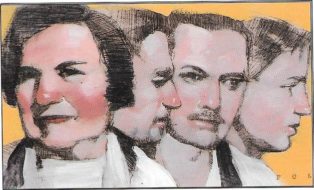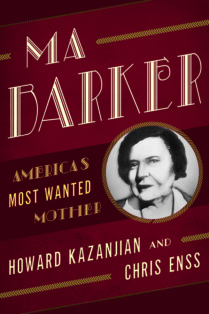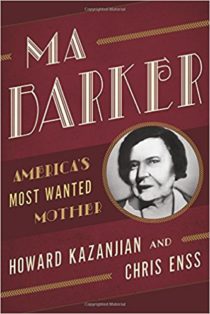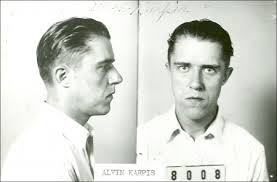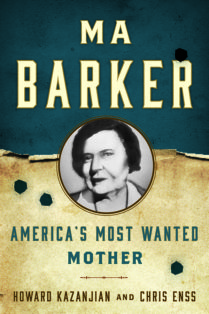Ring in the New Year with Ma and her boys.
Enter to win a copy of
Ma Barker: America’s Most Wanted Mother
In a time when notorious Depression-era criminals were terrorizing the country, the Barker-Karpis Gang stole more money than mobsters John Dillinger, Vern Miller, and Bonnie and Clyde combined. Five of the most wanted thieves, murderers, and kidnappers by the Federal Bureau of Investigation (FBI) in the 1930s were from the same family. Authorities believed the woman behind the band of violent hoodlums that ravaged the Midwest was their mother, Kate “Ma” Barker.
On January 14, 1939, immediately following an autopsy of the slain convicted kidnapper Arthur Barker, a staff member at the San Francisco Coroner’s Office made a death mask of the dead man’s face.
A memorandum written by a representative of the San Francisco division of the FBI noted that a plaster mold of Arthur’s face had to be made as close to his death as possible. “Well before bloating and the elements distort the character of expression,” the memo read. The process of making the mold was included in the note dated April 20, 1939. “Apply grease to the face and especially any facial hair, including eyebrows. Once the plaster dries layer plaster bandages mixed with water on the face. The first layer captures the details, even wrinkles, while the other layers reinforce the first. Then carefully remove the hardened mold, or negative, from the face. Finally, pour a substance like wax or a metal such as bronze into the negative to make a positive, three-dimensional death mask.”
The memo, outlining the dos and don’ts of making a death mask, was addressed to J. Edgar Hoover’s office. “This is a good death mask,” the note read. “I am arranging for a negative mold of the same to be made at once so that several copies can be made and used in the Director’s office or wherever else it may be considered desired to exhibit.”
The mask made of Arthur’s face was not the first FBI Director Hoover requested to be made. He had one poured of gangster John Dillinger in July 1934. Four masks of Dillinger’s face were made, and Hoover proudly had one on display in his office. The mask captured every detail of Dillinger’s face: the bullet wound, the scrapes from where he had hit the pavement, the bloating and the swelling from the heat and pooling blood, and even the tell-tale signs of underground plastic surgery. Arthur’s mask was just as telling. His original death mask was placed for safe keeping in the glass exhibit case on displaying moulage (the process of making molds) in the front exhibit room of the San Francisco coroner’s laboratory.
To learn more about the life and violent death of Ma Barker
and her sons read
Ma Barker: America’s Most Wanted Mother



